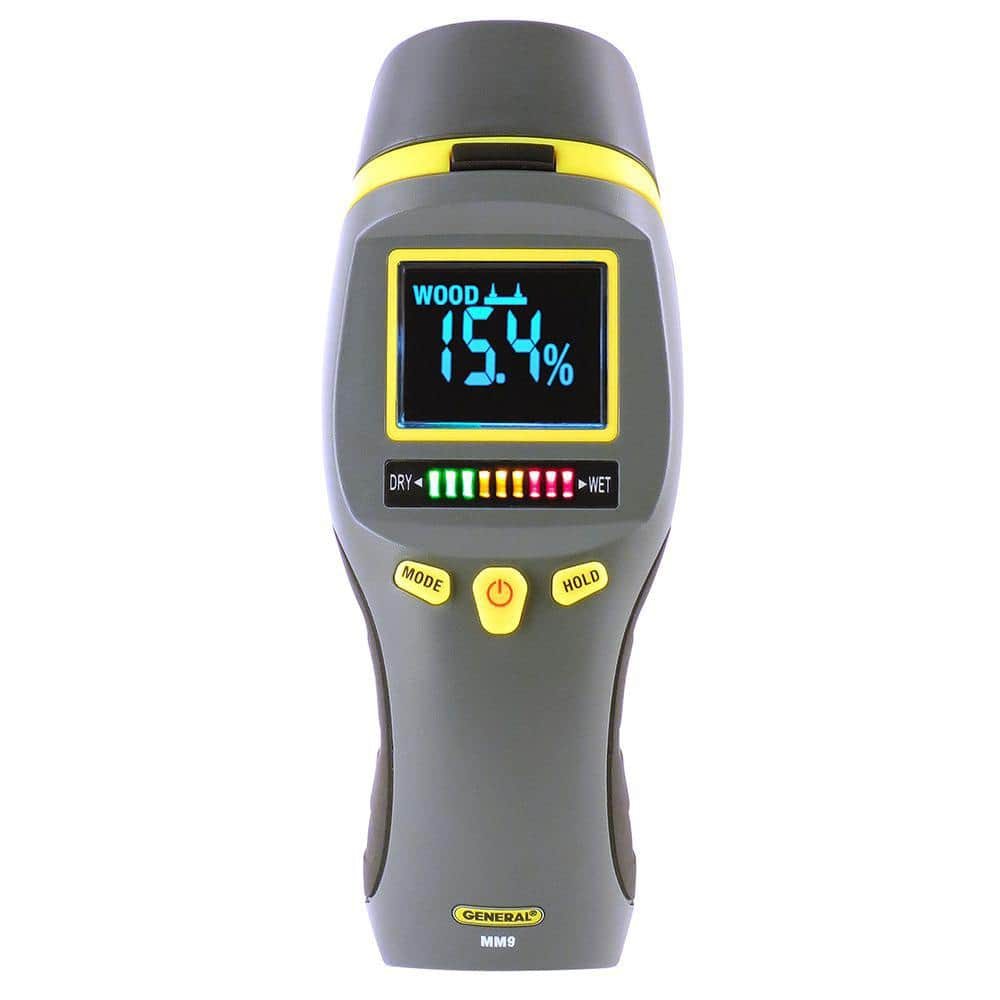Understanding the Significance of a Dampness Meter in Protecting Against Mold And Mildew and Water Damages in Your Home
In the realm of home maintenance, the presence of moisture can often be a quiet yet formidable enemy, qualified of creating pervasive mold development and dangerous water damage if left untreated. Recognizing the relevance of a dampness meter in this fight is not just an alternative but a tactical requirement.

Importance of Wetness Discovery
Efficient wetness discovery methods are important for protecting homes and protecting against potential mold growth and water damage. Moisture can permeate into various structure products, bring about architectural issues and carcinogen - Moisture Meter. By making use of a moisture meter, homeowner can proactively determine areas vulnerable to excess dampness, permitting prompt intervention and mitigation methods
Wetness meters give accurate analyses of dampness degrees in various materials such as drywall, timber, and concrete. This information aids in identifying locations of issue, even in hidden or hard-to-reach places. Early discovery of dampness build-up allows prompt repair services or changes to avoid additional damages.

Just How Dampness Meters Job
Dampness meters play a crucial duty in the proactive identification of excess wetness, helping in the avoidance of possible mold and mildew development and water damages by providing accurate readings of wetness levels in various building materials. These devices work based upon various principles, depending upon their kind. Pin-type wetness meters, for example, have 2 pins that penetrate the material to determine the electric resistance between them. When dampness exists, it boosts the material's conductivity, leading to a lower resistance analysis. Pinless dampness meters, on the various other hand, use electro-magnetic sensing units to check the product without triggering damage. These sensing units send out electromagnetic signals that pass through the product and determine the dielectric residential or commercial properties, showing moisture material. Some progressed moisture meters pin both combine and pinless innovations for thorough moisture discovery. Understanding exactly how moisture meters feature is vital for prompt and precise dampness level analyses, making it possible for effective safety nets versus mold and water damage.
Detecting Early Warning Indicators
Upon preliminary assessment of a residential or commercial property, identifying refined indicators of excess dampness comes to be essential in the early discovery of prospective mold development and water damage. Some typical early indication include musty smells, water spots on ceilings or wall surfaces, peeling paint or wallpaper, and warped or tarnished surfaces. Musty smells usually show the existence of mold and mildew or mildew, also if no noticeable signs appear. Water discolorations can signify leaks or infiltration, while peeling off paint or wallpaper may be a result of moisture endangering the bond of these products to the surface. Distorted or discolored surface areas, such as distorting floorboards or stained drywall, are clear signs of water damages. Moisture Meter. Furthermore, a boost in allergy signs or breathing problems among passengers might recommend the visibility of mold because of excess moisture. By without delay determining and addressing these very early caution signs, property owners can alleviate the risk of comprehensive mold growth and read what he said water damage in their homes. see this website


Stopping Mold Growth
Recognizing early caution indications of excess moisture within a residential property not only enables punctual discovery of potential mold and mildew development and water damage but likewise offers as a positive measure in stopping the proliferation of mold and mildew. To efficiently avoid mold and mildew development, it is essential to deal with any sources of wetness immediately.
Along with dealing with moisture sources, keeping indoor moisture degrees below 60% can significantly prevent mold growth. Appropriate air flow, appropriate insulation, and using air conditioning unit or fans can aid control indoor humidity levels. Keeping track of dampness levels in locations vulnerable to wetness, such as cellars and creep spaces, utilizing a wetness meter can likewise aid in very early detection of elevated moisture degrees and potential mold growth. By taking proactive procedures to avoid excess wetness and mold and mildew growth, home owners can guard their residential or commercial property and interior air top quality.
Benefits of Normal Surveillance
Regular surveillance of moisture degrees in a residential or commercial property can play a vital function in preserving a healthy interior setting and avoiding prospective mold and mildew and water damage. By regularly inspecting wetness degrees, property owners can identify any problems promptly and take required activities to protect against mold development and water damages.
Furthermore, normal monitoring allows home owners to track patterns and fads in wetness degrees over time. Inevitably, the consistent surveillance of wetness levels encourages house owners to shield their home, safeguard their health and wellness, and maintain the honesty of their indoor environment.
Final Thought
To conclude, using a dampness meter is necessary in protecting against mold and mildew and water damage in homes. By discovering very early indication of dampness, home owners can take positive measures to avoid mold development and costly repair services. Regular monitoring with a dampness meter can help keep a healthy interior environment and secure the structural honesty of the home. It is a beneficial device for making sure the safety and wellness of residents.
By making use of he has a good point a moisture meter, building owners can proactively determine areas susceptible to excess dampness, allowing for timely treatment and mitigation methods.
Moisture meters offer precise readings of wetness degrees in different products such as concrete, drywall, and wood.Wetness meters play a pivotal function in the proactive recognition of excess moisture, helping in the prevention of prospective mold and mildew growth and water damages by giving exact readings of moisture levels in different structure products. Understanding just how moisture meters function is essential for exact and prompt moisture degree analyses, allowing effective preventative measures versus mold and water damage.
Keeping an eye on wetness levels in areas susceptible to dampness, such as cellars and creep rooms, utilizing a wetness meter can also aid in early discovery of raised wetness levels and prospective mold development.